June 27, 2014
Air Date: June 27, 2014
FULL SHOW
SEGMENTS
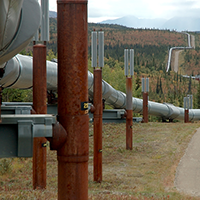
Canada Approves A Keystone XL Alternative: Northern Gateway Pipeline
View the page for this story
Canada’s federal government recently approved Enbridge’s proposed pipeline to bring Tar Sands oil from Alberta to the west coast. But the coastal First Nations strongly oppose the plan, and the British Columbia premier has yet to agree. Shawn McCarthy, energy reporter for the Globe and Mail, tells host Steve Curwood what this means for the future of the project and how it could impact the future of the Keystone XL pipeline. (07:25)
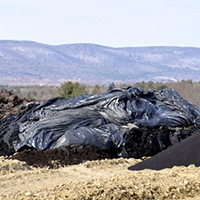
Radioactive Risks From Fracking Waste
/ Matt RichmondView the page for this story
New techniques allow companies to extract oil and gas from deep in the ground, but as Matt Richmond of WSKS and the Allegheny Front reports, naturally radioactive rocks above the Marcellus shale in the Eastern US can create a dangerous waste product. (06:40)

Beyond the Headlines
/ Peter DykstraView the page for this story
In this week’s Fourth of July trip beyond the headlines, Peter Dykstra and host Steve Curwood discuss how a preservative found in hot dogs may soon be used to poison feral hogs in the American South. Also Duke Energy's decades of foot-dragging in fixing a coal ash pond safety pipe, and the history of the Teapot Dome oil scandal and the jailing of a Secretary of the Interior. (03:40)

Autism Linked to Pesticide Exposure
View the page for this story
Women's exposure to agricultural pesticides during pregnancy appears to sharply increase the risk for developmental delays and autism in their children, according to a paper published in Environmental Health Perspectives. Irva Hertz-Picciotto, senior author of the study and Professor of Epidemiology at the MIND Institute at UC Davis discusses the study and the dangers of pesticides with host Steve Curwood. (06:20)

Honeybee Collapse linked to New Insecticides
View the page for this story
Since honeybees arrival in North America from Europe, they’ve become essential pollinators for the continent’s fruits and vegetables. Bee populations have mysteriously crashed in recent years, but as Harvard School of Public Health scientist Alex Lu tells host Steve Curwood, new research connects the collapse to the recent introduction of a new type of pesticide, neonicotinoids. (06:33)

White House Protects Pollinators (and also the Monarch)
View the page for this story
Monarch butterflies were hibernating in record low numbers in Mexico over the winter, but Cornell Ecologist Anurag Agrawal tells host Steve Curwood that he thinks the numbers breeding in Texas suggest the butterfly making a recovery. (05:06)
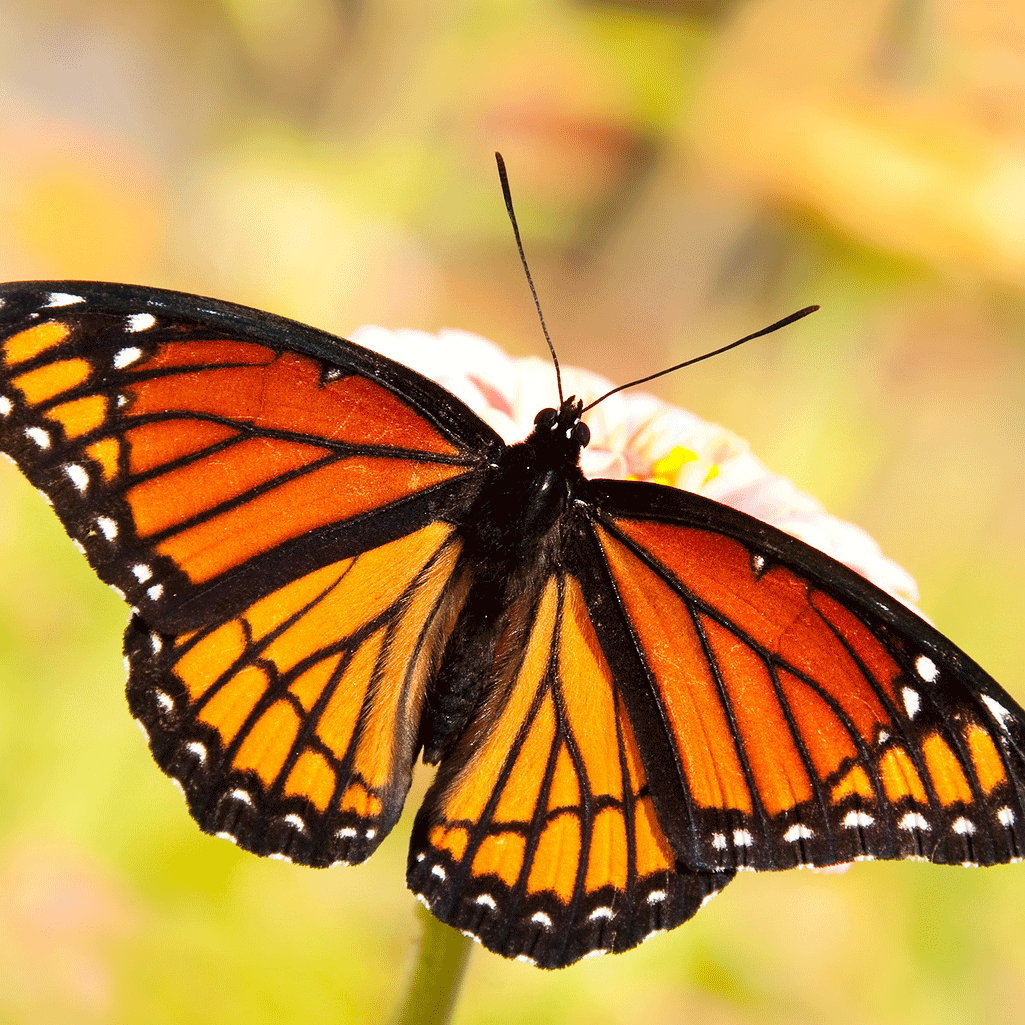
Flight Behavior
View the page for this story
Best-selling author Barbara Kingsolver’s newest novel takes place in a small Appalachian community in rural Tennessee. The farming town gets international attention when climate change causes the unexpected arrival of a huge collection of beautiful winged creatures. Barbara Kingsolver talks with host Steve Curwood. (12:00)
Show Credits and Funders
Show Transcript
HOST: Steve Curwood
GUESTS: Irva Hertz-Picciotto, Alex Lu, Shawn McCarthy, Anurag Agrawal, Barbara Kingsolver
REPORTERS: Matt Richmond, Peter Dykstra
[THEME]
CURWOOD: From Public Radio International, this is Living on Earth.
[THEME]
CURWOOD: I’m Steve Curwood. Research pinpoints a particular risk for pregnant women and their babies.
HERTZ-PICCIOTTO: Women who lived two-thirds to a mile away from where agricultural pesticides were being applied had about a sixty-percent higher risk of their child developing an autism spectrum disorder.
CURWOOD: A study of nearly a thousand children in California identifies which chemicals pose the greatest threat. Also, the Canadian government greenlights a tar sands pipeline to its West Coast, but First Nations groups that have lived there for millennia object.
MCCARTHY: They make a good living from the sea—they fish; there's lots of harvesting of seaweed and other marine flora and fauna that's not just part of their economic survival, but their cultural survival. And they have said, “no way.”
CURWOOD: That and more this week on Living on Earth. Stick around.
[NEWSBREAK MUSIC: Boards Of Canada “Zoetrope” from “In A Beautiful Place Out In The Country” (Warp Records 2000)]
ANNOUNCER: Support for Living on Earth comes from United Technologies – innovating to make the world a better, more sustainable, place to live.
Canada Approves A Keystone XL Alternative: Northern Gateway Pipeline
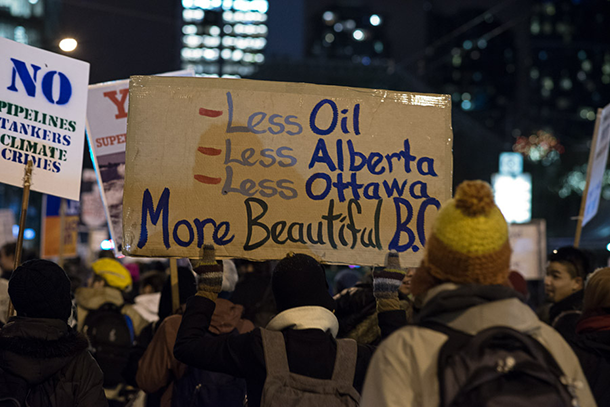
Demonstrators protest Northern Gateway pipeline in downtown Vancouver. (photo: Travis Blanston; Flickr Creative Commons 2.0)
CURWOOD: From the Jennifer and Ted Stanley Studios in Boston and PRI, this is Living on Earth. I’m Steve Curwood. The contentious Keystone XL pipeline to carry tar sands oil from Alberta to the U.S. Gulf Coast is back in the news, with a decision by the Canadian government to approve a pipeline that would bypass the U.S. The proposed Northern Gateway Enbridge pipeline would pump diluted bitumen from Alberta, across British Columbia to the country’s West Coast. If this pipeline moves forward, it would undercut the argument of opponents of Keystone XL who say blocking Keystone would protect the climate by keeping a lot of tar sands off the market. But Coastal First Nations strongly oppose the plan, and British Columbia has imposed its own conditions. Shawn McCarthy is an Energy Reporter for The Globe and Mail based in Ottawa and has been following the development of this proposal. Welcome to Living on Earth, Shawn.
MCCARTHY: Thanks very much, Steve.
CURWOOD: Now that the Canadian federal government has approved the Northern Gateway pipeline, what does it mean for the project? Where does it stand?
MCCARTHY: Well, it was a big hurdle for them, clearly, to get federal approval - although given the signals that this government has been sending, it was no surprise to anybody. They had a review panel that held hearings last year. And it recommended to the federal government approval, but it put 209 conditions on it, all of which really the company feels it can meet, but still a lot of work to be done. And then it faces huge political opposition in British Columbia, both from First Nations and non-aboriginal local residents and the provincial government is still not signed off on it; so I think it really is a political decision that the provinces face. The argument is, you know, we're taking the risks here both with pipeline breaks and spills and with the tanker traffic, and where is the reward for the taxpayers of British Columbia?

Coastal First Nations are vehemently opposed to the pipeline, using on the ground protesting tactics to delay the plan. (Photo: Travis Blanston; Flickr Creative Commons 2.0)
CURWOOD: Tell me about the Canadian system, and what that means about British Columbia's opposition here? How much power does BC have vis-à-vis the federal government of Canada in the situation?
MCCARTHY: Technically, not a lot. Technically, it is a federal decision to approve interprovincial pipelines, but the province does have a great amount of moral suasion and political clout. The federal government is going to be facing an election within a year or so, and huge opposition from the provincial government to this project would really hurt their re-election chances.
CURWOOD: Give me some details of the opinions of those First Nations that have expressed opposition to the pipeline. What are they upset about?
MCCARTHY: Well, there’s two groups: there are the communities that live along the pipeline route which goes from Edmonton in the middle of central Alberta through the Rockies to the coast. I think that the more difficult constituency for the company are the communities on the coast. And they make a good living from the sea—they fish; there’s lots of harvesting of seaweed and other marine flora and fauna that is not just part of their economic survival, but their cultural survival. And they have said, “no way.” They are not prepared to see a pipeline and all the increase in tanker traffic that that will entail. Complicating this is that, unlike in the rest of Canada and most of the United States, these First Nations have not signed treaties and have not ceded sovereignty from their land. And so they actually say that they need to be, not only consulted, but they need to give their okay before this pipeline gets built. And so the issues go way beyond the pipeline, and good luck to Enbridge to try and cut this Gordian knot.
CURWOOD: So what will BC and the First Nations do next?
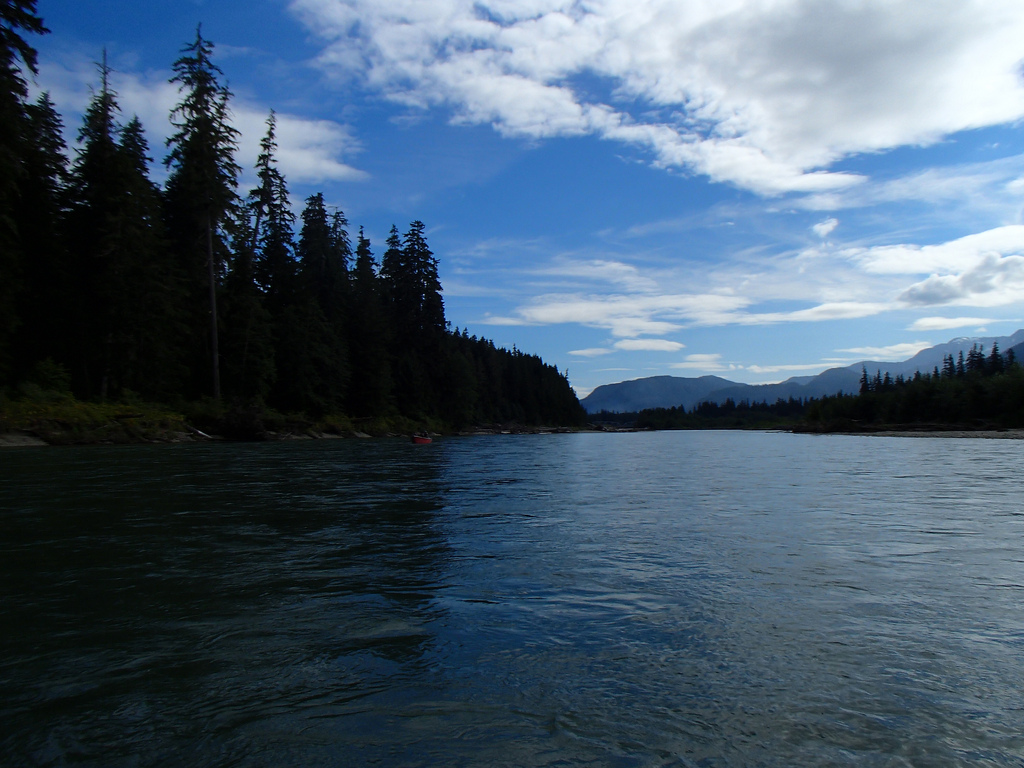
Kitimat, British Columbia, the proposed terminus for the Northern Gateway pipeline (photo: Wikimedia Commons)
MCCARTHY: So the First Nations have already begun launching legal challenges; in fact, they did it even before the government made its decision. And First Nations have done pretty well by Canadian courts. Their rights have been enshrined and protected and expanded, in some cases, by the courts. Then there is the idea of protest on the ground, and they're vowing that they will engage in direct action protests, lying in front of bulldozers, that type of thing. There is fear of, that things can get nastier if it goes ahead, and there have been threats expressed in the community that things could get violent if the government does not respect the wishes of the communities. As for the province, the province isn't going to make any decisions for quite a while yet, and I don't think that they will take an active opposition to the pipeline. They've just made it very clear to the ministers that their conditions have not been met. The premier has said that, “Our conditions have not been met, and until they are we will not provide support or encouragement to the pipeline.”
CURWOOD: Now, how is Prime Minister, Stephen Harper, and his administration responding to this opposition?

Trans-Alaskan oil pipeline (photo: Bigstockphoto)
MCCARTHY: Well, I think it's important to note for a starter that even in British Columbia, you know, it's not like an eighty or ninety-percent opposition. Many people are not opposed; or if they are opposed, it's not a top-of-mind issue that would drive their decision in the ballot box. The government argues that the oil sands in Alberta are a hugely important national asset, not just for Alberta, but for the country. Canada's oil has only been exported to the United States in our long history of an oil industry here, which goes back to just after the second World War, and the U.S. now, we’ve seen the Obama administration not wanting to approve the Keystone XL pipeline. We've seen a huge increase in production in the US, and we’ve seen U.S. demand flatten. So if you're selling oil, the U.S. is not a great market to be your sole avenue for sales; so it's vital, according to the government, to expand the access to Asian markets which are eager for that new supply, and will pay world prices, instead of the discounted prices that producers are getting in the US market.
CURWOOD: To what extent is the Northern Gateway project really just a bargaining chip to try to get the Keystone XL pipeline done through the United States, which I gather the folks who are doing the tar sands development would rather see?
MCCARTHY: The industry and the government believe that Canada needs a pipeline to the West Coast to access Asia, and right now the oil sands is producing two million barrels a day. The projections are for five million barrels a day in fifteen years or so, and if they're going to get that kind of growth, Keystone XL alone is not enough. They want at least two if not three more pipelines, so it's not an either or, in the minds of the Canadian government or the industry. That being said, that Keystone Pipeline—it's a key market, and the Canadians would love to get it. They are hopeful I think that the idea that Canada has options will put additional pressure on the U.S. to approve Keystone.
CURWOOD: Shawn McCarthy is a Global Energy Reporter for The Globe and Mail in Ottawa, Canada. Thanks very much, Shawn, for taking the time today.
MCCARTHY: You're welcome. Thanks very much.
Related links:
- Read Shawn McCarthy’s Globe and Mail article on the decision
- Coastal First Nations “symbolic blockade” of the Douglas Channel in opposition of the pipeline
Radioactive Risks From Fracking Waste
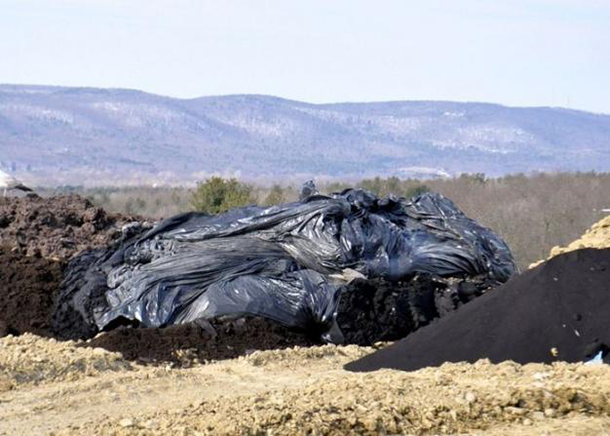
Freshly dumped Marcellus cuttings at landfill in Chemung County, New York. (Photo: Matt Richmond)
CURWOOD: Concerns about global warming aside, one reason the U.S. is not so eager to embrace the Keystone XL pipeline is the growth of its own energy production, as Shawn McCarthy mentioned. Fracking is mostly driving the oil and gas boom in America, but that has its own environmental problems, including the natural radioactivity of the rocks that cover the Marcellus shale in the Eastern U.S. And the radioactive debris, or drill cuttings, left behind by fracking can contaminate water unless properly treated. And while New York state has a moratorium on fracking, it does accept plenty of radioactive drilling waste from nearby Pennsylvania, and that has touched off intense debate.
Matt Richmond reports for WSKG and the Allegheny Front, and has the story.
RICHMOND: All rocks have some radiation in them. But the Marcellus Shale is an unusually radioactive underground formation. A recent study found it’s three-times higher than in other rock layers. The element of greatest concern is radium. And that’s what Larry Shilling has to watch out for.
SHILLING: The stuff with the plastic there—that is the drill cuttings.
RICHMOND: Shilling is vice president of Casella Waste Systems. The company operates the Chemung County landfill, where piles of drill cuttings trucked in from Marcellus Shale wells in nearby Pennsylvania are scattered around the yard. The cuttings look like heaps of wet black sand, wrapped in a black plastic liner. They are actually a mixture of rock cut through the gas-rich Marcellus Shale, fluids called drilling mud, used to help bore the well, and liquids found deep underground. All this material comes up before a well is fracked; it doesn’t include fracking chemicals. Shilling sits in a pickup truck at the landfill, watching trucks loaded with piles of dirt crawl by. They’re not allowed to take cuttings that are too radioactive.
SHILLING: See this thing that says Ludlum?
RICHMOND: Shilling points out a pair of white tubes, each about five feet tall, sitting on posts at the entrance to the landfill.
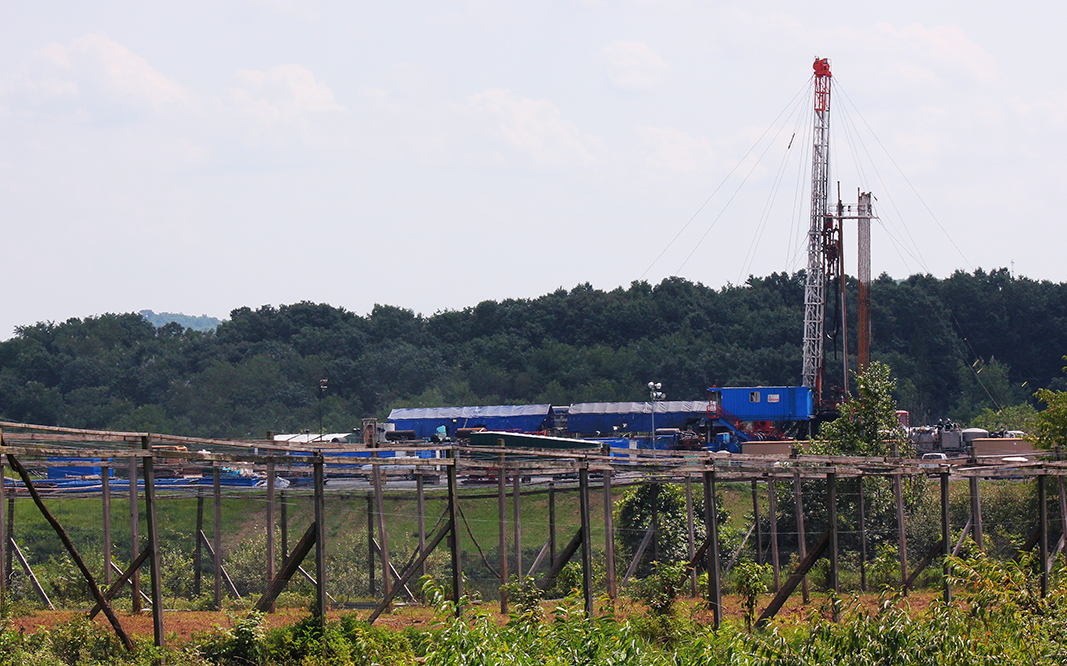
Marcellus Shale Gas Well (photo: WCN 24/7, creative commons 2.0)
SHILLING: So they pull up; they stop. And as they drive onto the scales, it registers what radioactivity might be in it.
RICHMOND: Shilling says they’ve never had a load of cuttings that exceeded acceptable levels of radiation enter the site. States in and around the fracking boom are working through what to do about all this naturally radioactive waste from drilling. Pennsylvania is conducting a study of radiation in the Marcellus Shale. West Virginia passed a law segregating drill cuttings from other parts of landfills. Casella wants New York state regulators to let the company take even more drill cuttings from Pennsylvania.
But not everyone is convinced this landfill is taking sufficient precautions. Gary Abraham is an environmental lawyer in Western New York working to block Casella from expanding its landfills. Abraham says there’s so much radiation in the deep shale rocks that it must inevitability be getting into landfills. He points to radioactivity readings taken by New York state regulators of the salty water found in the Marcellus Shale. This water, which comes up during and after fracking is called brine.
ABRAHAM: The radioactivity of the brine is as high as 15,000 picocuries per liter. The background radiation at the surface of the earth in New York is about 1 picocurie per liter.
RICHMOND: Shilling says while brine can be more radioactive, the cuttings are benign. In fact, says Shilling, testing they commissioned on the Marcellus showed very little radiation in the cuttings.
SHILLING: The highest reading we got from any of those four samples was 4.3 picocuries per gram, still under the cleanup standard that EPA set for cleaning up sites.
RICHMOND: The difference is: one, is looking at the brine associated with the Marcellus Shale and raising the red flag; the other is just focused on the rock and giving the green light.
The natural radiation in the Marcellus, particularly in the brine that comes out of it during and after fracking, is well established. Avner Vengosh is a geochemist at Duke University. He found radium in a Pennsylvania stream near a plant that processed fracking wastewater at 200 times background level. Vengosh says there’s a risk that, once the radium locked deep underground, gets into streams and rivers, it will make its way into fish and eventually into people.

Reporter Matt Richmond (photo: Allegheny Front)
VENGOSH: Radium is very similar to calcium, and as a result, it would accumulate in the bone and start radiation, which would lead to bone cancer.
RICHMOND: The particular form of radium found in the shale, radium-226, has a half-life of more than 5,000 years. So basically, once it gets into the environment, it’s there for good.
Since contaminants started showing up in streams, Pennsylvania has tightened restrictions on the disposal of wastewater. But the treatment of solid waste at places like the Chemung landfill in New York concerns Vengosh.
VENGOSH: Every contaminant that’s being disposed into landfills, the solids, are subject to numerous attacks of acids and different chemicals, different solutions within the landfill. And they’re creating what we call leachate.
RICHMOND: Leachate: it’s basically garbage tea. Anything that’s in the landfill, like radium. can get into it. What happens to the leachate? It comes here.
[SOUNDS FROM SEWAGE PLANT]
MCGOVERN: We are at the Chemung County sewer district on Lake Street in Elmira, and this is a twelve-million gallon per day trickling filter plant.
RICHMOND: The plant handles about six million gallons of wastewater a day. The landfill sends up to 30,000 gallons a day for treatment.
Dan McGovern is the plant’s chief operator. McGovern says they’re only certified to do basic tests at their on-site lab. They can check for solids, pH levels, dissolved oxygen and salts. But, do they test for radium? McGovern says, ‘No.’ Is that something they would have to test for?
MCGOVERN: They would actually have to send it out to a very sophisticated lab to test it; yes.
RICHMOND: The treatment plant tests the water when it comes in and when it goes out, into the Chemung River, but never for radiation.
Casella does a quarterly radiation test of its leachate. Results showed low levels of radium-226, but with each testing, there was a small increase. In New York, Marcellus Shale drill cuttings are exempted from the regulations governing low-level radioactive waste. If they weren’t, landfills couldn’t take them, and the leachate would have to go to specialized treatment plants that can handle hazardous waste.
CURWOOD: Matt Richmond reports for WSKG and the Allegheny Front.
Related links:
- Check out the original story at the Allegheny Front’s website
- Allegheny Front
[MUSIC: Jenny Scheinman “Bent Nail” from The Littlest Prisoner (Sony Music 2014)]
CURWOOD: Coming up: growing evidence of the dangers of ubiquitous pesticides for people and pollinators. Keep listening to Living on Earth.
[CUTAWAY MUSIC: John Scofield: “Al Green Song” from Uber Jam Deux (Savoy Jazz 2013)]
Beyond the Headlines

Oil wells near Teapot Dome, Wyoming from 1936 (photo: Boyd Norton, EPA)
CURWOOD: It's Living on Earth, I'm Steve Curwood. Time now to call up Peter Dykstra, our guide to the surprising world beyond the headlines. He's the publisher of DailyClimate.org and Environmental Health News, that's EHN.org, and he's on the line from Conyers, Georgia. Hi there, Peter, what's going on?
DYKSTRA: Hi, Steve, the Fourth of July is coming upon us, and of course in one of the most curious ceremonies honoring American Independence, some brave men and women will once again gather on the beaches of Coney Island and compete for the Gluttony championship—aiming for the record of 69 hot dogs and buns consumed in ten minutes. Yes, we’ve made one of the Seven Deadly Sins into a competitive sport, but that’s not why I bring this up. I mention it because sodium nitrite, the vaunted preservative for hot dogs and bacon and other processed meats, is in the news.
CURWOOD: Tell us about this new-found fame for sodium nitrite.
DYKSTRA: Some researchers have found that sodium nitrite is unusually toxic in hogs, so the Agriculture Department is testing ways to deploy sodium nitrite to control the estimated five million feral hogs in the U.S. These wild animals cause an estimated billion and a half dollars in damage to crops, gardens and lawns every year.
CURWOOD: Wait, so sodium nitrite can kill hogs, but it saves the bacon?
DYKSTRA: Yes, and bear in mind that studies have shown that this particular additive is not particularly good for humans either.

Feral hogs are a huge pest for farmers across the southern United States and Hawai’i. (Photo: US Fish and Wildlife)
CURWOOD: What’s next for today?
DYKSTRA: Well, it’s one thing to fail to listen to warnings before an environmental disaster, but it’s another thing entirely to fail to listen to warnings for nearly three decades. The cause of the huge coal ash spill that polluted the Dan River in Virginia and North Carolina last February got its own red flag starting in 1986, 28 years ago. There were engineering reports on the drainage pipe at the center of the spill. Those reports came to the surface during an ongoing federal grand jury investigation into possible criminal charges against Duke Energy and the operators of the plant. Engineers did subsequent investigations and apparently warned Duke Energy at least four more times, most recently in 2006, that this might be a problem.
CURWOOD: And there are a lot of at-risk coal ash sites out there now. Right?
DYKSTRA: Right, EPA has a list of over 600 coal-ash impoundments—45 of them are identified as “high-hazard” because of how toxic the coal ash is—and there’s a separate EPA list with 53 sites coal-ash sites where lagoons are contained by what they consider to be “high-hazard” dams.
CURWOOD: You can see if there’s a risky coal-ash site near your home, and link to all these stories at LOE.org. Hey, Peter, what do you have this week from the annals of history?
DYKSTRA: Let’s set the clock back to the Roaring Twenties. Back then, oil caused powerful men to misbehave. Ninty years ago this week, 1924, Albert Fall, a former U.S. Interior Secretary, was indicted for bribery in the biggest political scandal of the decade, what became known as the Teapot Dome scandal. Mr. Fall took the fall because he took kickbacks when he assigned oil leases at discount prices to the cronies of President Warren G. Harding. Fall was convicted. He was sentenced to a year in prison for handing out the leases near the Teapot Dome, an oil reserve in Wyoming. The oil scandal also eventually took down Attorney General Harry Daugherty, but didn’t reach President Harding, who may have avoided prosecution by dying in office.
CURWOOD: So I want to get this straight. There was a time in this country when Big Oil could throw money around, turn politicians’ heads, and just simply get their way?
DYKSTRA: You’re kidding, right?
CURWOOD: Yep.
DYKSTRA: I thought so.
CURWOOD: Peter Dykstra is published of EHN.org, and DailyClimate.org. Thanks for taking the time, Peter.
DYKSTRA: You bet. We’ll talk to you soon.
Related links:
- Read more about this new use for sodium nitrite
- Duke Energy was warned about leaky pipes as far back as 1986
[MUSIC: Bobbi Humphrey “The Trip” from fancy Dancer (Blue Note Records 1975)]
Autism Linked to Pesticide Exposure

Women living about a mile from agricultural pesticide applications during pregnancy were 60% more likely to bear a child with an autism spectrum disorder. (Photo: Bigstockphoto)
CURWOOD: A new paper in Environmental Health Perspectives is sounding a note of warning for pregnant women. The research confirms earlier and smaller studies that also found that living close to areas where agricultural pesticides are used is associated with a spike in the risk of their unborn children having developmental delays and autism spectrum disorders. Neurodevelopmental disorder scientists at the UC Davis MIND Institute recruited 970 children from its ongoing studies of autism for this groundbreaking research. Irva Hertz-Picciotto is Professor of Epidemiology at the Institute and a senior author of the paper and joins us now. Welcome to Living on Earth.
HERTZ-PICCIOTTO: Thanks for having me.
CURWOOD: So tell me, just how risky is it for a pregnant woman to live near a place where pesticides are being sprayed agriculturally?
HERTZ-PICCIOTTO: So in our study, women, who live two-thirds to a mile away from where agricultural pesticides were being applied, had about a sixty-percent higher risk of their child developing an autism spectrum disorder. So the background risk, based on the latest figures from the Centers for Disease Control, is about one in sixty-eight—so, if it’s sixty-percent higher, maybe one in forty-something, which certainly is reason to be concerned.
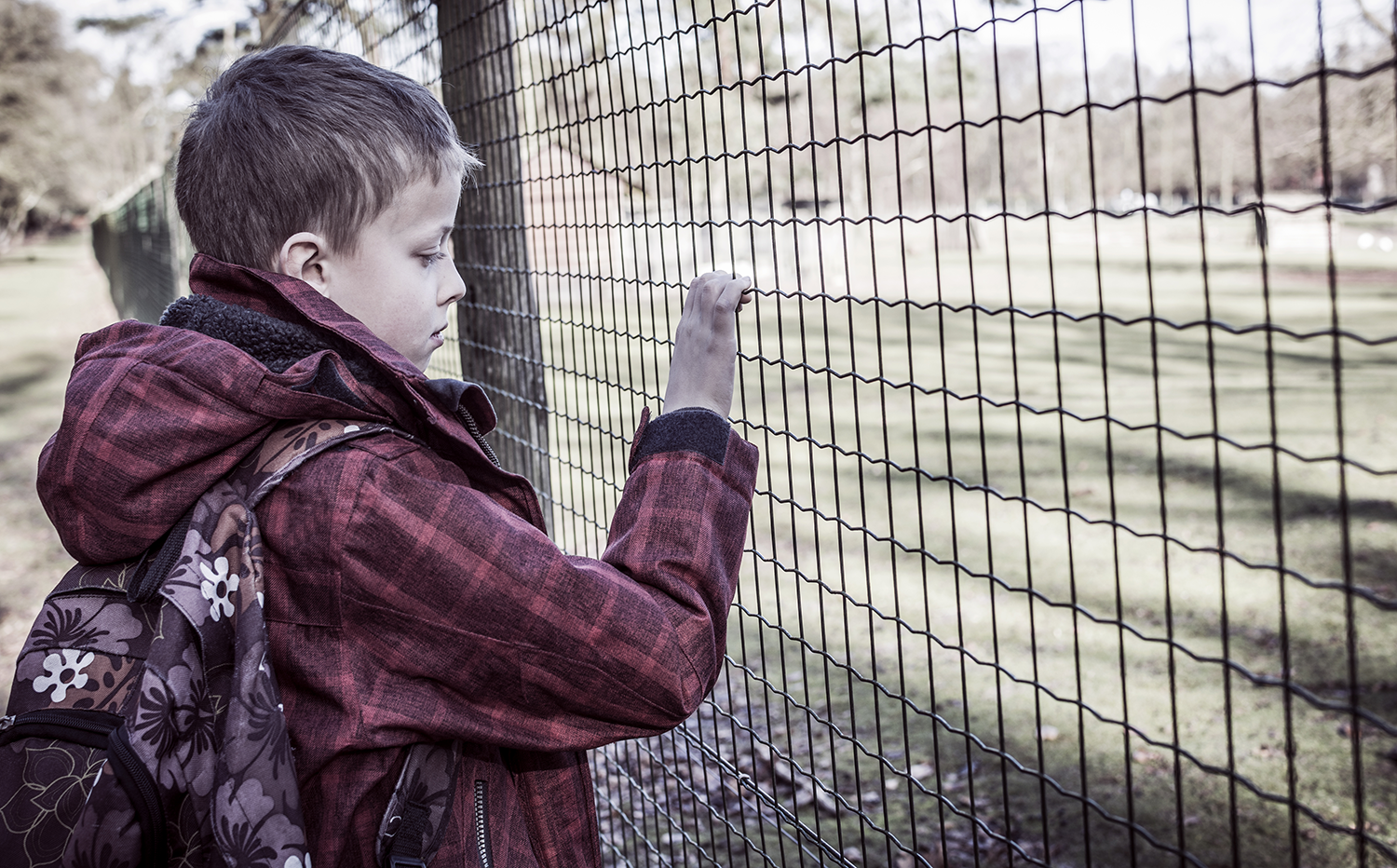
Autism spectrum disorders affect the organization of neurons. Children with autism often experience social difficulties, needs routine, and bullying. (Photo: Bigstockphoto)
CURWOOD: And sixty-percent is the average. In certain cases, the risk is much higher, you found.
HERTZ-PICCIOTTO: So there are of course multiple types of pesticides that are used in agriculture, depending on the crops. One of them is called organophosphates—one the most widely used individual pesticides in that class is chlorpyrifos, and that one actually was associated with a particularly high-risk for third trimester and second-trimester use of that product.
CURWOOD: You say high-risk? What do you mean?
HERTZ-PICCIOTTO: Between two- and three-fold higher. That class of pesticides is no longer permitted for use in household products. So, up until about 2000, that was actually one of the main ingredients in our sprays that we used for cockroaches and ants and those sorts of pests around the home. They continue to be used for commercial uses, including in agriculture.
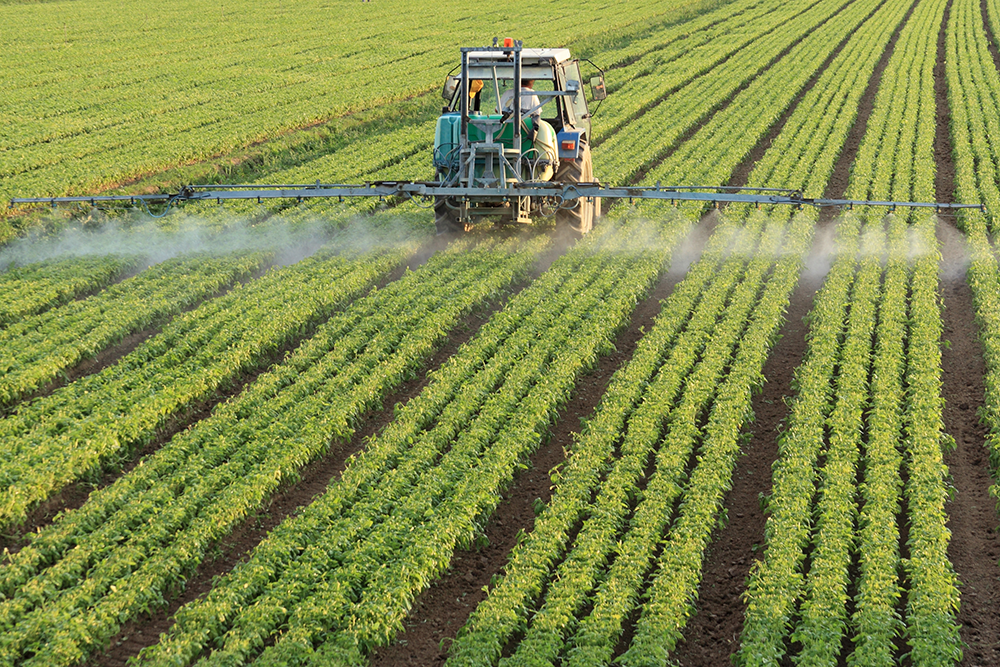
Commercially sprayed pesticides may be carried by the wind, and studies have found them up to four miles away from their application sites. (Photo: Bigstockphoto)
CURWOOD: What are the other chemicals that you studied?
HERTZ-PICCIOTTO: Pyrethroids, which are used not only in agriculture, but also in the household products—they've replaced the organophosphates. They confer about an eighty-percent higher risk for women and their child. These are a product that is labeled usually as ‘natural’ and that's because the original pyrethrin came from the chrysanthemum plant; however, the pyrethroids have been synthesized to be more toxic and to last longer. Some of them can last, you know, maybe a few weeks, others longer than a year.
CURWOOD: And the other chemical group?
HERTZ-PICCIOTTO: The carbamates. They’re somewhat similar in chemical structure to the organophosphates. And they were not associated with a higher risk of autism spectrum disorder, but they were associated with a higher risk for other types of developmental delay, such as intellectual disability or sometimes called cognitive impairment.
CURWOOD: Now, talk to me about what you did for this study. How did you get a clear understanding of how they’d been exposed to these chemicals?
HERTZ-PICCIOTTO: Actually, this is part of the CHARGE study, which stands for Childhood Autism Risk from Genes and Environment. We actually find out about these children through California's Department of Developmental Services, and then we conduct interviews with the family. One of the things we collect is their residential history. This paper was taking the addresses that they reported and linking them to a database that California maintains where commercial pesticide applicators are required to report all of the jobs where they have applied pesticides and where they apply them. And then the where is what we link. So we had the addresses of the woman, we have the applications of the pesticides and the dates. We have the dates of her pregnancy and put that together to determine was she living in close proximity or not.
CURWOOD: Now what do you suppose is the mechanism of how these chemicals worked to increase the risk of a child developing autism spectrum disorder? How do you go from, say, killing insects to changing someone's mental abilities?

Pyrethroids, used in the home and on the fields, are often labeled as natural because of their similarities to the natural defenses of chrysanthemums, but they carry the risk of promoting autism. (Photo: Bigstockphoto)
HERTZ-PICCIOTTO: Now as you mentioned they're designed to kill—kill insects. So unlike a lot of other chemicals that we encounter, they are really designed to shutdown a central nervous system, granted of the insect. The mechanisms by which nerves, in virtually all living-beings, operate, involves electrical impulses going across neurons through what's called the synapse. Many pesticides in fact operate by disrupting that chemical jump. So that’s one mechanism that pesticides can operate by. There are a lot of functions in that early development that can be disrupted.
CURWOOD: What surprises did you have doing this?

This study looks at pesticide exposure near farmlands, but eating conventionally farmed produce can also expose people. (Photo: Bigstockphoto)
HERTZ-PICCIOTTO: Hmm, surprises. We thought we would see that the closer they lived, the stronger the effect. and that was sometimes true, and sometimes not true. But the weakness in this was, of course is, which way was the wind blowing when the applications were being made? Was the woman at home? Were the windows open? Was she at work that day? How much is actually getting into her body? So a lot of unknowns and this is an approximate indicator of potential for exposure; it's not an actual measurement. We also need to look at other sources of pesticide exposure, so living near agricultural fields is one, home applications would be an another, and then the third would be residues on food that was sprayed, you know, while it was out in the fields and may still be there when it gets into your home.
CURWOOD: Irva Hertz-Picciotto is Professor of Epidemiology at the UC Davis MIND Institute. Thank you so much for taking the time today.
HERTZ-PICCIOTTO: Sure. Thank you very much for having me, Steve.
Related links:
- Read the NIEHS paper here
- A related paper from UC Davis about how pesticides might interact with autism
- UC Davis Mind Institute
Honeybee Collapse linked to New Insecticides

Empty hives that were exposed to neonicotinoids during the Harvard study. (Photo: Alex Lu)
CURWOOD: Well, pesticide exposure isn’t just a problem for humans. Many scientists think that their widespread use could be contributing to the collapse of honeybee populations around the globe. Professor Alex Lu of the Harvard School of Public Health recently published a paper in the Bulletin of Insectology probing the connection between pesticides called neonicotinoids and honeybee die off. He noticed that the first signs of Colony Collapse Disorder corresponded perfectly with the rise in 2005 of these new pesticides, the neonicotinoids. They can save money for farmers, as there is no need to spray. Instead the chemicals can be used to coat seeds or added to irrigation water, making these insecticides systemic in plants and residual in plant products.
LU: The link is high fructose corn syrup. Those corn that come off on the GMO program was to make high fructose corn syrup, and those pesticide residue show up in high fructose corn syrup that those beekeepers used to feed their hive and that led to CCD.
CURWOOD: Colony Collapse Disorder?
LU: Colony Collapse Disorder. Yes. So we used this observation in the field to formulate our hypothesis, and then we designed a scientific study to see whether we can replicate CCD in our experimental site.
CURWOOD: So what you did was that you took sugar-water and in some cases you added neonicotinoid to that and in others you didn't.
LU: That's correct.
CURWOOD: And what did you find?
LU: So we found for those hives that we didn't give them pesticides, neonicotinoids, they survived. They survived over the winter. One hive actually died, but died in consistent to disease, like mites or nosema parasites. Whereas in our first year study, fifteen out of sixteen colonies, that we treat them with neonicotinoids, they died. And the post-mortem observations are in consistence to the CCD which is the abandon of the hive by those adult bees, which they’re not supposed to be.

Beekeeper with a healthy hive (Photo: Bigstockphoto)
CURWOOD: So what happens? The bees just leave the hive in the middle of the winter?
LU: This is a very interesting scientific question because what we have right now in terms of CCD is the pesticide fundamentally changed their neurological behavior or their condition. As I mentioned, by the time the winter arrives, bees don't go outside. The cold temperature actually kills the bees right away, so they form a cluster inside the hive so each other kind of survive through heat generation through each individual bees. Somehow those neonicotinoid changes this aspect of the biology of honeybees, so by the time the beekeeper finds out their hive is empty, it’s too late.
CURWOOD: So it changed the behavior of the bees.
LU: Exactly. At least, that’s the hypothesis so far.
CURWOOD: Now, Professor Lu, you mentioned that you came to the Harvard School of Public Health to study human health and exposure to pesticides. What does this research about neonicotinoids tell us about possible risks to humans from this?
LU: Well, I think the direct impact to human health is the shortage of the food, if we keep losing those bees. One-third of the agricultural production relies on honeybee pollination. And those foods are the food that we all like, and very important to our health because of nutrition. So not having enough bees to pollinate definitely will going to effect the price of the food and eventually will harm people’s health.

The Eurasian Honeybee is an essential pollinator for the US food system (Photo: Bigstockphoto.com)
The second effect to human health, which is unknown at this moment, is that what would the impact of those residues in the environment in a longer period of time. I look at neonicotinoids, it’s almost identical to DDT that we had in the 60’s and 70’s. So we now know that twenty to thirty years later, DDT affected reproductive systems. And whether neonicotinoids have other health affects to human beings we don’t know, yet because this issue is still relatively new. But I’m sure down the road, we will find out exactly how human health could be impacted by a little bit of residue in the environment—in the water, in the food and so on.
CURWOOD: So, President Obama recently announced that he’s going to start a pollinator task force—take a whole bunch of federal agencies and departments to come together to deal with the pollinator crisis. What’s your understanding of what the task force would do?
LU: Well, I think one thing they’re going to set up a habitat or gardens in the Midwest states, so the bee can pollinate and get their food from those gardens or habitats so they can survive. The other aspect of the initiative, as you said, is to gather experts across the agencies to have independent review within the next six months to see whether neonicotinoids, as a group, does cause the CCDs. But I have to say, though, the initiative might be ill-advised.
CURWOOD: Why?
LU: Because if you think about it, why you only set up those habitats in the Midwest states? Why not in California? Why not in Florida? So already there’s something wrong with the Midwest states. So, what do we grow in those Midwest states—nothing but the GMOs. So obviously the government knew that the relationship between the GMO and the use of neonicotinoids in those GMO seeds has something to do with the Colony Collapse Disorder. But they don’t want to say that. Instead they say, “We’re going to set up those gardens or habitats in the Midwest states.” They are not really looking at the fundamental question that really caused the CCD.

Chengsheng “Alex” Lu, associate professor of Environmental Exposure Biology at the Harvard School of Public Health (Photo: Michaela Kapp)
CURWOOD: So, what do we need to do then to save bees?
LU: Well, we need to take these pesticides away from where bees go. Bee does not know which plant which flower has been treated with neonicotinoids. They go after nectar; they go after pollen. So, if neonicotinoids have been used in those areas, then those bees will be exposed. So the only way to prevent bees to be exposed to those pesticides, is not to use those pesticides. Throughout my career, I never called for a ban of any pesticides because I do value pesticides in public health, for example. But for neonicotinoids, I think we are looking at DDT right now. I mean, the best way to deal with DDTs is not to use DDT. I think neonicotinoids fall into the same category.
CURWOOD: Alex Lu is an Associate Professor of Exposure Biology at the Harvard School of Public Health. Thanks for coming by today.
LU: Thank you, Steve.
Related links:
- Read Alex Lu’s paper in the Bulletin of Insectology
- A recent study found that neonicotinoids were found in “bee-friendly" plants sold at major garden centers in the U.S.
- Alex Lu is a professor at the Harvard School of Public Health
[MUSIC: Carla Bley “Ida Lupino” from Dinner Music (ECM/WATT Works Records 1977)]
CURWOOD: Coming up: some good news about those most regal of butterflies—the Monarchs. That's ahead here on Living on Earth. Stay tuned.
ANNOUNCER: Funding for Living on Earth comes from United Technologies, a provider to the aerospace and building systems industries worldwide. UTC Building & Industrial Systems provides building technologies and supplies, container refrigeration systems that transport and preserve food and medicine with brands such as Otis, Carrier, Chubb, Edwards and Kidde. This is PRI, Public Radio International.
[CUTAWAY MUSIC: John Scofield: “Al Green Song” from Uber Jam Deux (Savoy Jazz 2013)]
White House Protects Pollinators (and also the Monarch)
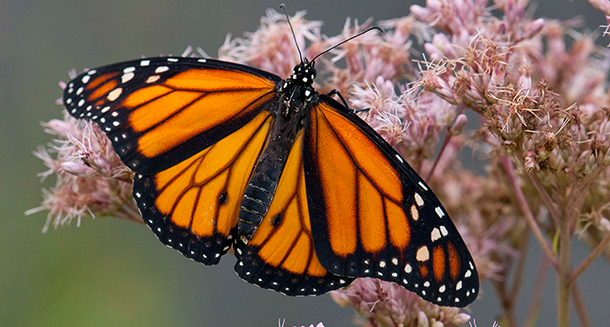
Mature monarch on a milkweed flower. (Photo: Ellen Woods)
CURWOOD: It's Living on Earth, I'm Steve Curwood. Back in the winter, we reported dire news about the state of those iconic and beloved butterflies, Monarchs. Researchers noted record low numbers of Monarchs overwintering in the Mexican mountains of Michoacan—a decline blamed variously on deforestation south of the border, global warming, bad weather, GMO crops and the decline of milkweed, which Monarch caterpillars feed on.
Well, having sounded the alarm, we thought we should check in to find out how they’re doing now it's summertime. So we called up an expert, Anurag Agrawal, Professor of Ecology and Evolutionary Biology at Cornell University, who says, so far, so good.
AGRAWAL: So our first numbers for how the Monarchs are doing this year come from Texas. Those tens of millions of monarchs that were overwintering in Mexico in the mountains of Michoacan fly to Texas and lay eggs there, and they have then a complete generation there. They drop their eggs. Caterpillars develop on the Texas milkweeds, and those adults then pass away; they die. That first generation in Texas did well, and they've moved north. They’re now in the upper Midwest—we've seen them right here in Ithaca flying through, so really only time will tell. As you know, the monarchs have three to four generations every year, and what that means is the summertime is their opportunity for the population to rebuild back up.

A monarch caterpillar (photo: Ellen Woods)
CURWOOD: I have to say that I've noticed in my own backyard in New Hampshire some Monarchs just this past weekend. I didn’t see any last year. Of course, that’s just anecdotal, but I'm likely to see more, do you think?
AGRAWAL: I do. I had the same experience that you did. Last summer was the lowest number of butterflies I'd seen in the summertime in my ten years in Ithaca, and like I said, I’ve already seen them again this year, so to me there’s kind of bad news and good news. The bad news is the last three years were the lowest on record, in terms of number of Monarchs at the overwintering grounds. A single low year is not necessarily a huge problem, but when there are three dramatically low, and the lowest years on record, that's when people begin to worry about extinction.
But the good news is that there's tremendous reproductive potential in the Monarch butterfly. A female has about a thousand eggs in it, so in the field, she might deposit let's say, four to five-hundred of those. Quite remarkably, you know, if all five-hundred were to survive, one female and one male could repopulate the tens of millions of butterflies we kind of expect to see each year. What we hope to see is that their populations build over the summer, and we’ll really know what the state of the population is at the time of the southern migration.
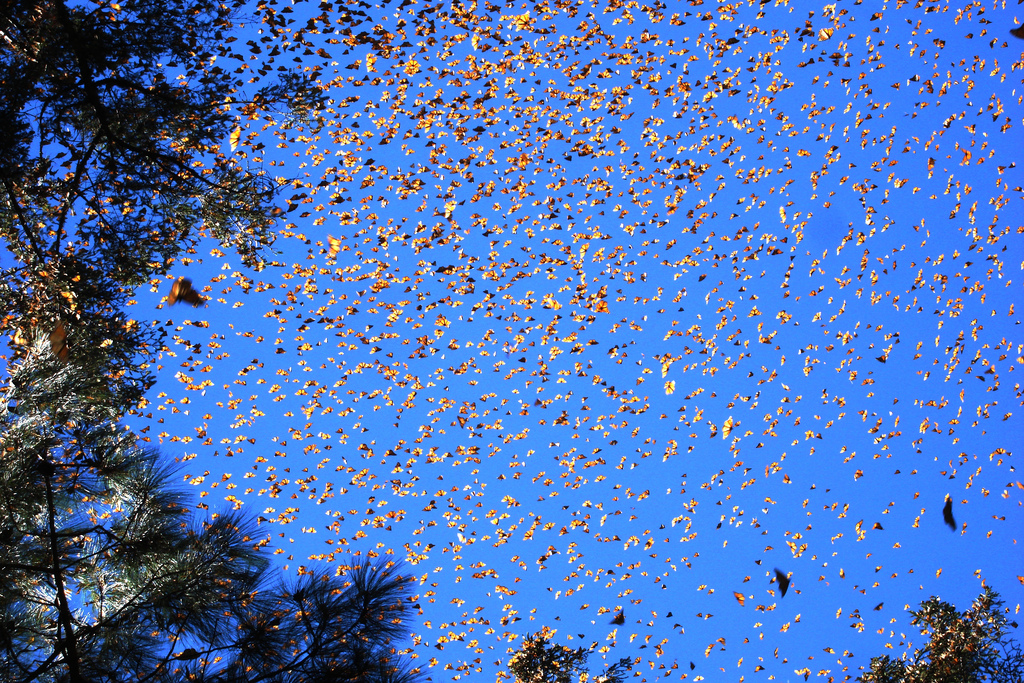
Over winter, monarchs usually coat the sky in the valleys of Michoacán, Mexico. But their numbers have been declining. (Photo: Luna Sin Estrellas, Flickr Creative Commons 2.0)
CURWOOD: Now President Barack Obama just issued a formal presidential memorandum, which requires federal departments and authorities to put their heads together to come up with a game plan to protect pollinators, and in that order, he specifically mentioned the Monarch butterfly. What do you make of that?
AGRAWAL: Yeah, I think it was a landmark memorandum. I'm really excited that insects, both bees as well as butterflies, have made it onto the president's agenda. You know, really, the memorandum compels, as I read it, fourteen federal agencies—it's not just the Secretary of Agriculture and the EPA, the Environmental Protection Agency. But it compels the Department of Transportation, of Defense, of Education, of Energy, to all work together to come up with this strategy for maintaining bee and pollinator health. The fact that Monarchs are lumped in there as you know I think is a little bit amusing, but also really important. The amusing part is that what we know from the biology of milkweeds, which are the host plant of the Monarch butterfly, as well as their general biology, is, in fact, they are not particularly good pollinators. They're doing very little of the pollination of milkweed or other plants.
CURWOOD: So what you saying is that while the science of this may be wrong to cite the Monarch as a pollinator, the fact that the president is bothering to mention the butterflies is good news?
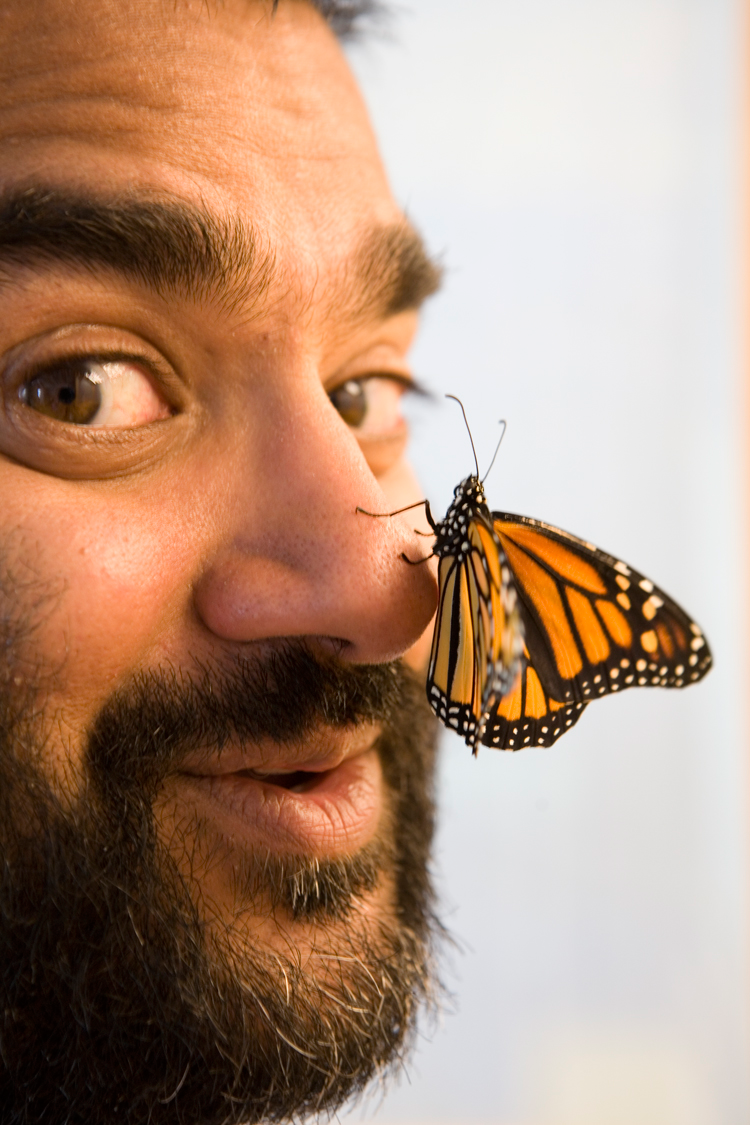
Professor Anurag Agrawal and a friend! (Photo: JASON KOSKI/Cornell University Photography)
AGRAWAL: Absolutely good news.
CURWOOD: So why is it important to protect the Monarch butterfly? We all love looking at them, but why all the attention in your view?
AGRAWAL: In my view, the attention to the Monarch, I think, comes from two sources: one, millions of people all over the continent are appreciating their natural beauty—the biology of this spectacular organism. The flip side is because it travels across three nations from Canada through the U.S. to Mexico, the environmental health of our continent is in a way reflected in the annual cycle of the Monarch. If this butterfly can't complete its lifecycle, then we're doing something wrong as a continent because we aren’t providing a sustainable habitat where the butterfly can do its annual migration.
CURWOOD: Anurag Agrawal is Professor of Ecology and Evolutionary Biology at Cornell University. Thanks for taking the time with us today.
AGRAWAL: My pleasure. Thank you.
Related links:
- White House Pollinator Memorandum Info
- Anurag Agrawal’s lab at Cornell University
Flight Behavior
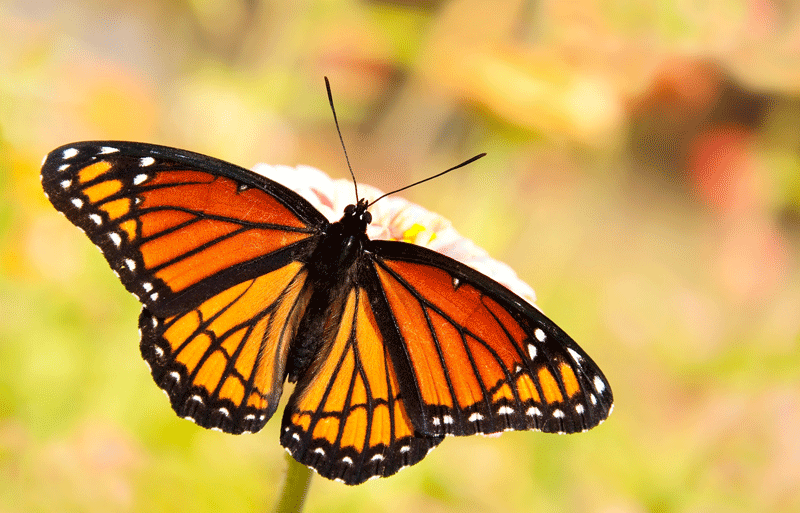
Female monarch butterfly (Danaus plexippus)(photo: Bigstockphoto)
CURWOOD: News about the Monarchs reminded us of another interview from a couple of winters ago with award-winning author Barbara Kingsolver, about her latest novel, Flight Behavior. It also features the Monarchs and their epic migration, and starts off with the main character, Dellarobia, heading up the mountain behind her Tennessee sheep farm, planning to leave the farm, her kids and her comatose marriage.
KINGSOLVER: She’s marching up this mountain. She’s at the end of her rope—she doesn’t really want to wreck her life, but she has to wreck her life. She’s stopped along the way by the sight of what looks to her like a valley of trees on fire. These trees are all glowing orange. And, she becomes convinced that it’s a miracle—it’s like her burning bush—and she turns around and runs back down the hill, picks up her kids and decides to straighten up her life.
Well, soon enough she finds, it’s not a miracle, it’s a freakish biological event caused most likely by climate change. It’s an immense congregation of Monarch butterflies. Normally, these butterflies congregate—aggregate for the winter in the high mountains of central Mexico. In this case, I imagined a circumstance in which their migratory system is so disrupted that they would shift their aggregation to very similar mountains in southern Appalachia. What would happen, if this happened, is it would be touch and go because this is a much colder winter in southern Appalachia, and most likely in the course of this winter is the whole species is going to freeze to death.

Barbara Kingsolver (Photo: David Wood)
CURWOOD: So, of course, you, Barbara Kingsolver, you’ve trained deeply in science.
KINGSOLVER: I have a Bachelor of Science, a Master’s in Ecology and Evolutionary Biology, and actually, I was in a PhD program, I got, I did everything but finish the dissertation. I defected at the last minute when I sort of realized that this dissertation, if I finished it, would probably reach and impress—maybe eleven or twelve people in the world. And I had this idea I could shoot for an even bigger audience than that.
CURWOOD: In this novel, Flight Behavior, you spend a lot of time on science. It may be a fiction that the Monarchs are taking up winter residency in Tennessee, but after that, all of the science that you have in there, to my read, is accurate.
KINGSOLVER: Thank you.
CURWOOD: Tell me more, actually, about the science of these Monarch butterflies and why you used this as a teaching tool for Dellarobia and the people around her.
KINGSOLVER: I just had this vision of the Monarchs roosting in an Appalachian hollow. That’s sort of the magic: writing a novel is ninty-nine percent labor and one percent magic. But I recognized immediately, it would be a really great prime mover for a novel because there is so much truth. Already, there are plenty of well-documented circumstances in which animals that are less adaptable than we are, are getting shifted in ways that are both incongruous and fatal to them.
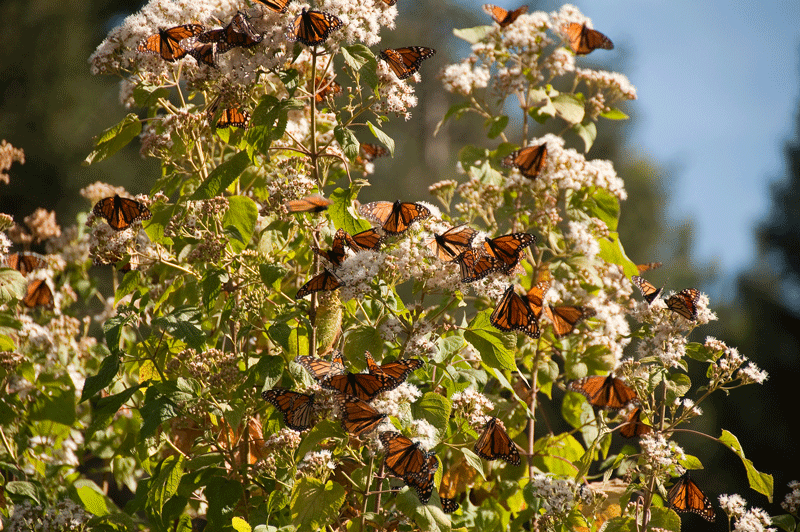
Butterflies congregate at the Michoacán butterfly reserve in Mexico. (Photo: Bigstockphoto)
At one point, Dellarobia in this novel is trying to explain what she has learned, because she comes to be, actually, in the employ as sort of a low-level lab tech for this scientist who comes in to study this. So, she’s learning all this stuff, and she’s trying to translate it into terms that her friends and her poor husband, Cub—who’s kind of a dim bulb, he’s really sweet, but he’s not very bright—she’s trying to explain it and she says, “It’s like they’re directed by cues that they can’t change. They have to follow the signs.”
So, she says, “It’s like if you followed the signs to the grocery store every week, and you went to the Food King. And then one day you followed the same signs exactly the same way and you ended up at the auto parts store, what would you eat?’
CURWOOD: The science around these Monarch butterflies is really fascinating—that they make these generational migrations, for instance. Can you tell us more about that?
KINGSOLVER: It’s something to knock your socks off. The Monarch is in your yard, in the fall—maybe in Connecticut or Maine or Minnesota, that Monarch that is about to turn around and head for Mexico—has never been in Mexico. Its parents were never in Mexico. How does a brain the size of a pinhead tell them how to get some place they’ve never been? Year after year, century after century—they’ve been doing this for thousands of years, and now, suddenly it is getting disrupted.
Not precisely as I’ve portrayed it in this novel, but that is a potentially real scenario. I actually tracked down, I did a lot of research on Monarchs, obviously, and I tracked down the world’s foremost experts, notably Dr. Lincoln Brower. And I laid this scenario on him—and I was afraid he would laugh me out of the laboratory—but no. I said, “Is this at least plausible?” And he said, “Yes it is, and lets talk about why and how that could be true.”
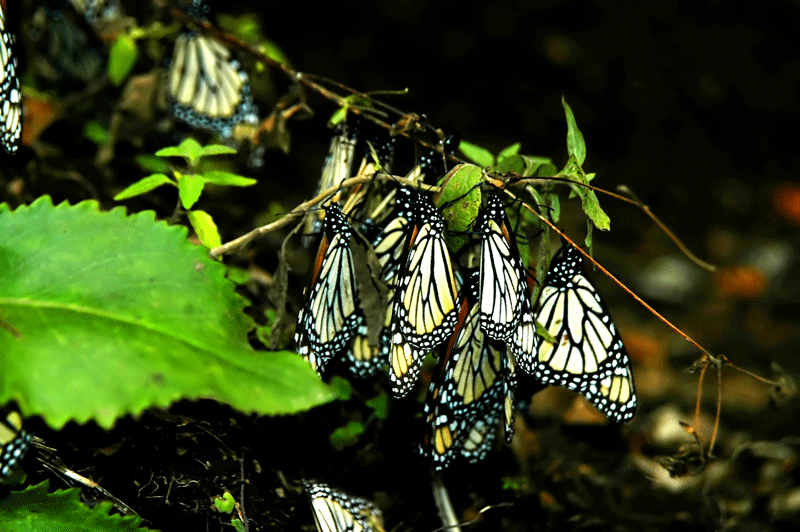
Hibernating monarch butterflies. (Photo: Bigstockphoto)
CURWOOD: And is that when you walked out of his lab feeling really sad?
KINGSOLVER: Yes and no. I knew when I entered this novel, how serious this is. How far along this scary road we have gone. There’s a moment in this novel when Ovid is trying to explain to the reporter how bad things are, he says: “We are perched at the top of Niagara falls. We can’t just take a leisurely swim back upstream when we get over our denial. Does this strike you,” he asks, “as a good time to be debating the existence of the falls?”
I know where we are; I’ve been following this a long time. I’m a scientist; I believe science. I guess it makes me feel a little better to know I’m talking about it; I’m not in denial. I’m doing the best I can to encourage a conversation and maybe illuminate some of the reasons why we’re failing to converse. That’s the best I can hope for.
CURWOOD: So, let’s talk a little bit about your protagonist here, Dellarobia. She got into this marriage that she was going to throw away because, well, it was a shotgun wedding.
KINGSOLVER: Right. Well, whatever big ideas she might have had about her life in high school, she gave up when she got pregnant and married at seventeen. So she’s very constrained by her circumstances. So, this event brings Dellarobia, for the first time, in contact with journalists from the outside world, with tourists, with scientists, and really with science. With a scientific way of evaluating what she sees.
CURWOOD: Now there’s a great passage in your book that I think really exemplifies the different camps that people fall into when it comes to believing in climate change. It starts on page 320, Dellarobia is talking to Ovid, the butterfly scientist. Could you read that for us please?
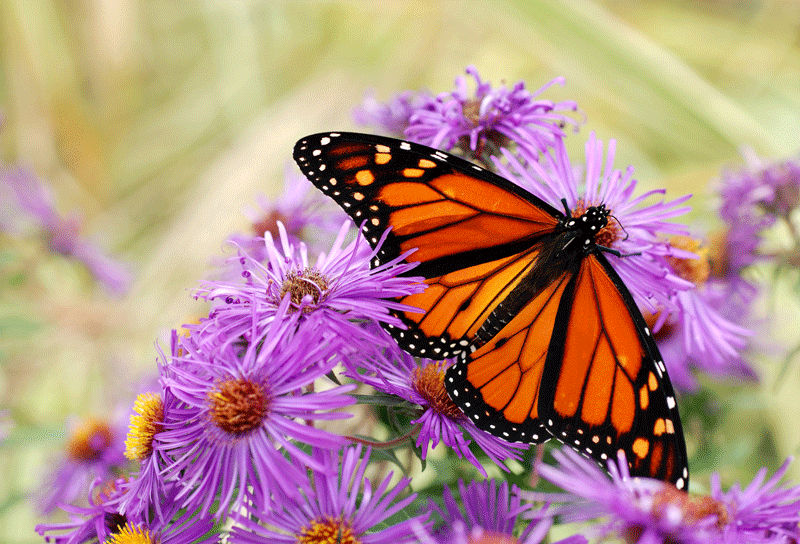
Male monarch butterfly (Danaus plexippus) (Photo: Bigstockphoto)
KINGSOLVER: Sure. “He says, ‘Science doesn’t tell us what we should do, it only tells us, what is.’ And Dellarobia responds, ‘That must be why people don’t like it.’ Ovid seems startled, ‘They don’t like science?’ ‘I’m sorry,’ she says, ‘I’m probably speaking out of turn here. You’ve explained to me how big this is, the climate thing, that it’s taking out things we’re counting on, but people are saying, just forget it. My husband, guys on the radio, they say it’s not proven.’
Ovid says, ‘What we’re discussing is clear and present, Dellarobia, scientists agree on that. These men on the radio, I assume are non-scientists. Why would people buy snake oil when they want medicine?’ ‘That’s what I’m trying to tell you. You guys aren’t popular. Maybe your medicine’s too bitter, or you’re not selling to us. Maybe you’re writing us off thinking we won’t get it.’
Ovid nodded slowly, ‘We were not always unpopular, scientists. Fifteen years ago people knew about global warming, at least in a general way, you know,’ he said, ‘In surveys, they would all answer: Yes it exists; it’s a problem—conservatives or liberals, exactly the same. Now there is a divide.’
‘Well, yeah,’ Dellarobia says, ‘People sort themselves out, like kids in a family, you know? They have to stake out their different territories, the teacher’s pet or the rascal. I’d say the teams get picked and then the beliefs get handed around. Team camo, we get the right to bear arms and John Deere and the canning jars and tough love and taking care of our own. The other side wears, I don’t know what, something expensive. They get recycling and population control and lattes and as many second chances as anybody wants.’ Dr. Byron looked stupefied.”
CURWOOD: Dellarobia, as a character, I find just fascinating. People who would like to sell a lot of books in America typically don’t write about really poor people. And Dellarobia is pretty close to the bottom; I mean, she’s struggling to even buy her kids presents for Christmas in the dollar store.
KINGSOLVER: You’re right. Poverty is an important part of the grounding of this novel, and this is the culture I wanted to describe and then move you into a conversation with yourself about environmentalism. And I think the environmental movement in this country, and in the world, may often been failing to take into account class.

(Photo: Bigstockphoto)
CURWOOD: Indeed, because, you have this scene a bit later—she’s with an activist who’s come to her farm, he’s handing out leaflets and he’s trying to get people to reduce their carbon footprint, but it turns out she’s doing just about everything that’s on her list.
KINGSOLVER: It’s completely irrelevant to her life. You know, he goes down this checklist that starts with: “Take your own silverware when you dine out.” And she says, “I haven’t been to a restaurant in over two years,” the restaurant being the Dairy Queen or something. He says, “Well, okay, eat less red meat,” and she sort of wishes she could eat red meat.
And he says, “Turn down the thermostat,” and she’s trying to keep the electricity on in her house. It’s been shut off several times already during this novel because she couldn’t pay the bills. This is a moment when she is beginning to get that as humans on this earth, we’ve passed some kind of point where we’re going to have to start to rein ourselves in—rein in our consumption. And she’s seeing that she never got there in the first place. This is what a lot of people on Planet Earth are being asked to do: rein themselves in when they never quite got there in the first place.
CURWOOD: Well, I guess we don’t want to give away the ending here…
KINGSOLVER: We don’t.
CURWOOD: So instead I think I need to ask you, Barbara Kingsolver, what do you do next? Can we expect more works on the environment? Climate change?
KINGSOLVER: I think you can. I think you can expect that I will always write about things that seem to matter to me and to matter to my readers because a novel is an audacious act. I’m asking you: okay, set aside your life for, let’s say, eight or ten hours and listen to me. I come from a culture of modesty. We southerners don’t say, “Sit down and listen to me.” We say, “What do you think of this?” I promise you, I’m not going to ask you to give yourself over to a whole novel unless it’s going to rattle at the cage of humans in the world a little bit, and so, that’s what you can expect of me.
CURWOOD: Barbara Kingsolver’s latest book is entitled Flight Behavior. Thank you so much for taking this time today.
KINGSOLVER: Thanks so much. It’s great to be here.
Related links:
- Barbara Kingsolver’s biography
- About Flight Behavior
[MUSIC: Robert Glasper “Butterfly” from Double Booked (Blue Note Records 2009)]
CURWOOD: Living on Earth is produced by the World Media Foundation. Naomi Arenberg, Bobby Bascomb, Emmett Fitzgerald, Helen Palmer, Adelaide Chen, James Curwood, Lauren Hinkel, Jake Lucas, Abi Nighthill, Jennifer Marquis and Olivia Powers all help to make our show. Jeff Turton is our technical director. Alison Lirish Dean composed our themes. You can find us anytime at LOE.org, and like us on our Facebook page, it’s PRI’s Living on Earth. And we tweet from @LivingOnEarth. I'm Steve Curwood. Thanks for listening.
ANNOUNCER1: Funding for Living On Earth comes from the Grantham Foundation for the protection of the environment, supporting strategic communications and collaboration in solving the world’s most pressing environmental problems. The Kendeda Fund, furthering the values that contribute to a healthy planet, and Gilman Ordway for coverage of conservation and environmental change. Living on Earth is also supported by Stonyfield Farm, makers of organic yogurt, smoothies and more. www.stonyfield.com.
ANNOUNCER2: PRI. Public Radio International.
Living on Earth wants to hear from you!
Living on Earth
62 Calef Highway, Suite 212
Lee, NH 03861
Telephone: 617-287-4121
E-mail: comments@loe.org
Newsletter [Click here]
Donate to Living on Earth!
Living on Earth is an independent media program and relies entirely on contributions from listeners and institutions supporting public service. Please donate now to preserve an independent environmental voice.
NewsletterLiving on Earth offers a weekly delivery of the show's rundown to your mailbox. Sign up for our newsletter today!
 Sailors For The Sea: Be the change you want to sea.
Sailors For The Sea: Be the change you want to sea.
 The Grantham Foundation for the Protection of the Environment: Committed to protecting and improving the health of the global environment.
The Grantham Foundation for the Protection of the Environment: Committed to protecting and improving the health of the global environment.
 Contribute to Living on Earth and receive, as our gift to you, an archival print of one of Mark Seth Lender's extraordinary wildlife photographs. Follow the link to see Mark's current collection of photographs.
Contribute to Living on Earth and receive, as our gift to you, an archival print of one of Mark Seth Lender's extraordinary wildlife photographs. Follow the link to see Mark's current collection of photographs.
 Buy a signed copy of Mark Seth Lender's book Smeagull the Seagull & support Living on Earth
Buy a signed copy of Mark Seth Lender's book Smeagull the Seagull & support Living on Earth

